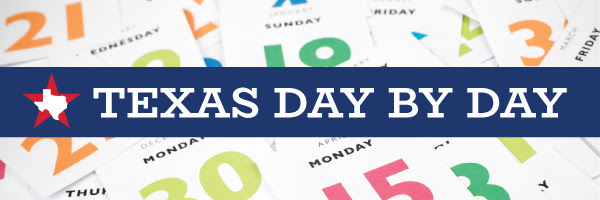| 5/27/1852: Houston photographer announces “pictures on glass” |
| On this day in 1852, J. H. S. Stanley, Houston photographer, advertised that he had “succeeded in taking pictures on glass,” probably using the collodion process. Stanley was born in England around 1799 and lived from 1850 to 1870 in Houston, Texas, where he made daguerreotype portraits. Though he was reported to be an amateur at the time he moved to Houston, he opened a portrait studio sometime after his arrival. A few years later his photographic work won praise in The Photographic Art-Journal and Humphrey’s Journal. In December 1851 Stanley announced the completion of the Daguerreian Sky-Light Gallery and his partnership with FitzGibbon and Bourges of Galveston, an association that apparently had dissolved by April 1852. In November 1851 Stanley publicized his ability to take portraits and views on glass, ivory, or paper, “with duplicates to any required extent,” indicating that he was experimenting with a negative-positive process at an early date. Despite his 1852 announcement, he made no mention of the glass-plate process in later advertisements.See also:PhotographyStanley, John H. Stephen |
| 5/27/1870: Famous cattle trail debuts in print |
| In its edition for this day in 1870, the Kansas Daily Commonwealth made the earliest known printed reference to the Chisholm Trail, the major livestock route out of Texas. Cattle drovers followed the old Shawnee Trail by way of San Antonio, Austin, and Waco, where the trails split. The Chisholm Trail continued on to Fort Worth, then passed east of Decatur to the crossing at Red River Station. It followed the same route as modern U.S. Highway 81 from Fort Worth to Newton, Kansas. Although the Chisholm Trail was used only from 1867 to 1884, the longhorn cattle driven north along it provided a steady source of income that helped the impoverished state recover from the Civil War.See also:Chisholm TrailCattle TrailingShawnee Trail |
| 5/27/1961: Texas elects first Republican senator since Reconstruction |
| On this day in 1961, Texas voters made John Tower the first Republican senator elected in the state since 1870. Tower, born in Houston in 1925, ran unsuccessfully for state representative in 1954 and served as a delegate to the Republican national convention in 1956. By 1960 he was sufficiently well known to be nominated at the state Republican convention to run against Lyndon B. Johnson for senator. Johnson easily won the election but resigned his seat when he was also elected vice president. Tower led the ensuing special election and won the runoff. In his twenty-four year Senate career, Tower influenced a variety of domestic and foreign policy issues, especially defense and banking. After Tower resigned from the Senate in 1985, President Ronald Reagan appointed him chief United States negotiator at the Strategic Arms Reduction Talks in Geneva. In 1986, Reagan appointed him to chair the so-called Tower Commission to investigate the Iran-Contra affair. In 1989 Tower was President George Bush’s choice to become secretary of defense, but the Senate did not confirm his nomination because of his conservative political views and alleged excessive drinking and womanizing. Tower died, along with his daughter Marian, in a commuter plane crash in Georgia in 1991.See also:Tower, John GoodwinRepublican PartyTexas Post World War IIJohnson, Lyndon Baines |

